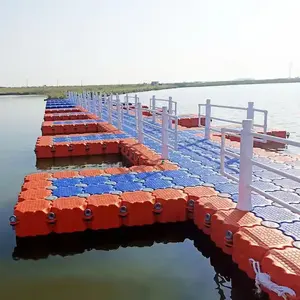(15764 products available)



































































































































































































































Types, Specifications, Selection Criteria, Maintenance, and DIY Installation
A boat platform is a deck-like structure attached to the exterior of a vessel that provides additional space for walking, relaxation, and boat access. Though sometimes considered a luxury, these platforms have become essential features for many boat owners, enhancing both functionality and safety.
Located at the stern (back) of the boat, swim platforms provide swimmers with easy water access. These platforms typically include:
Best for: Water sports enthusiasts and family boating
The transom forms the boat's rear wall, serving as a mounting point for motors and accessories. Many modern boats include:
Best for: Functional accessibility and equipment mounting
Located at the front of the vessel, bow platforms enhance access to the forward section. These platforms may be:
Best for: Enhanced forward visibility and relaxation space
Built along the vessel's perimeter, side decks provide safe passage between bow and stern. Features include:
Best for: Larger boats requiring safe perimeter movement
Specially designed for anglers, these large open deck areas provide space for fishing activities:
Best for: Dedicated fishing vessels and enthusiasts
These versatile additions can be customized to suit specific needs:
Best for: Boats with limited space or high-performance vessels
| Material | Advantages | Disadvantages | Maintenance Requirements |
|---|---|---|---|
| Wood | Natural appearance, strength, traditional aesthetic | Susceptible to rot, requires regular maintenance | Regular sealing, inspection for rot, immediate repair of damaged sections |
| Aluminum | Lightweight, corrosion-resistant, low maintenance | Can be more expensive, less traditional appearance | Periodic cleaning to remove salt/debris, inspection for corrosion |
| Composite Materials | Luxury appearance, durability, weather resistance | Higher cost, complex installation | Regular cleaning, inspection for cracks or delamination |
| Fiberglass | Durable, customizable, water-resistant | Can be heavy, may yellow over time | Periodic waxing, cleaning, and UV protection application |
Platform dimensions should be proportional to the boat size. Consider:
Different configurations serve various purposes:
Essential elements to prevent accidents:
Selecting the optimal boat platform requires careful consideration of several key factors. Whether for personal use or business purchasing, these guidelines will help ensure you make an informed decision.
A platform's weight rating is critical for safe operation:
Choose materials based on intended use and environment:
Prioritize features that enhance safety:
Consider the complexity and cost of installation:
Ensure the platform dimensions are appropriate:
Match platform features to your specific needs:
Boat owners can often install or replace platforms themselves with proper planning and basic tools. Following these structured steps can make the process straightforward and ensure a safe, functional result.
Gather necessary tools and materials including screwdrivers, wrenches, drills, marine-grade fasteners, sealant, and safety equipment (gloves, eye protection).
Secure your boat in a stable position, preferably on land or solidly docked with access to the installation area.
Thoroughly inspect the existing platform for damage patterns, structural weaknesses, and mounting systems that should be addressed in the replacement.
Take detailed measurements of the existing platform and mounting points to ensure proper fit of the replacement.
Clean the installation area to remove debris, old sealant, and corrosion that could interfere with the new platform.
Document the original installation with photos and notes to reference during reinstallation.
Remove accessories attached to the platform such as ladders, cleats, or electronics.
Carefully disconnect and label any wiring for lighting or other electrical components.
Remove mounting hardware systematically, working from outside edges toward structural supports.
Gently separate the platform from the boat, being careful not to damage the mounting surfaces.
Perform a dry fit of the new platform to verify proper alignment and make any necessary adjustments.
Apply marine-grade sealant to all mounting points to ensure a watertight seal.
Position the new platform carefully, aligning with all mounting points.
Install fasteners in a cross-pattern (similar to tightening lug nuts) to ensure even pressure distribution.
Torque all hardware to manufacturer specifications to prevent over-tightening or loose connections.
Reconnect any electrical components and verify proper function before final assembly.
Reinstall accessories such as ladders, cleats, and other equipment.
Clean excess sealant and verify all mounting points are secure and watertight.
Conduct a thorough visual inspection of all installed components.
Perform load testing gradually to verify the platform can support the intended weight.
Check for water intrusion at mounting points after initial use.
Re-tighten all fasteners after the first few uses as they may settle.
A boat platform is an extension attached to a vessel that provides additional deck space for various activities. Though often considered a luxury feature, platforms have become essential components for many boat owners as they enhance safety, accessibility, and functionality. They serve multiple purposes including swimming access, sunbathing areas, fishing space, and easier boarding/disembarking.
Yes, boat platforms typically provide excellent return on investment through both enhanced functionality and increased resale value. Platforms extend usable space, improve water access, and create versatile areas for recreation. From a market perspective, boats equipped with quality platforms are generally more attractive to potential buyers and can command higher resale prices, often recovering much of the initial investment.
Absolutely! Many platforms are specifically designed for smaller vessels. Compact swim platforms, fold-down designs, and lightweight materials make them suitable for boats of virtually any size. The key is selecting a platform proportionally sized to the vessel with appropriate weight considerations. Small boat platforms typically focus on essential functions like water access while minimizing impact on performance and handling.
Several effective approaches can minimize slipping hazards:
For maximum effectiveness, combine structural features with appropriate maintenance practices.
Platform lifespan varies significantly based on materials, maintenance, and environmental exposure:
Regular inspection and preventative maintenance can significantly extend the functional lifespan of any platform type.